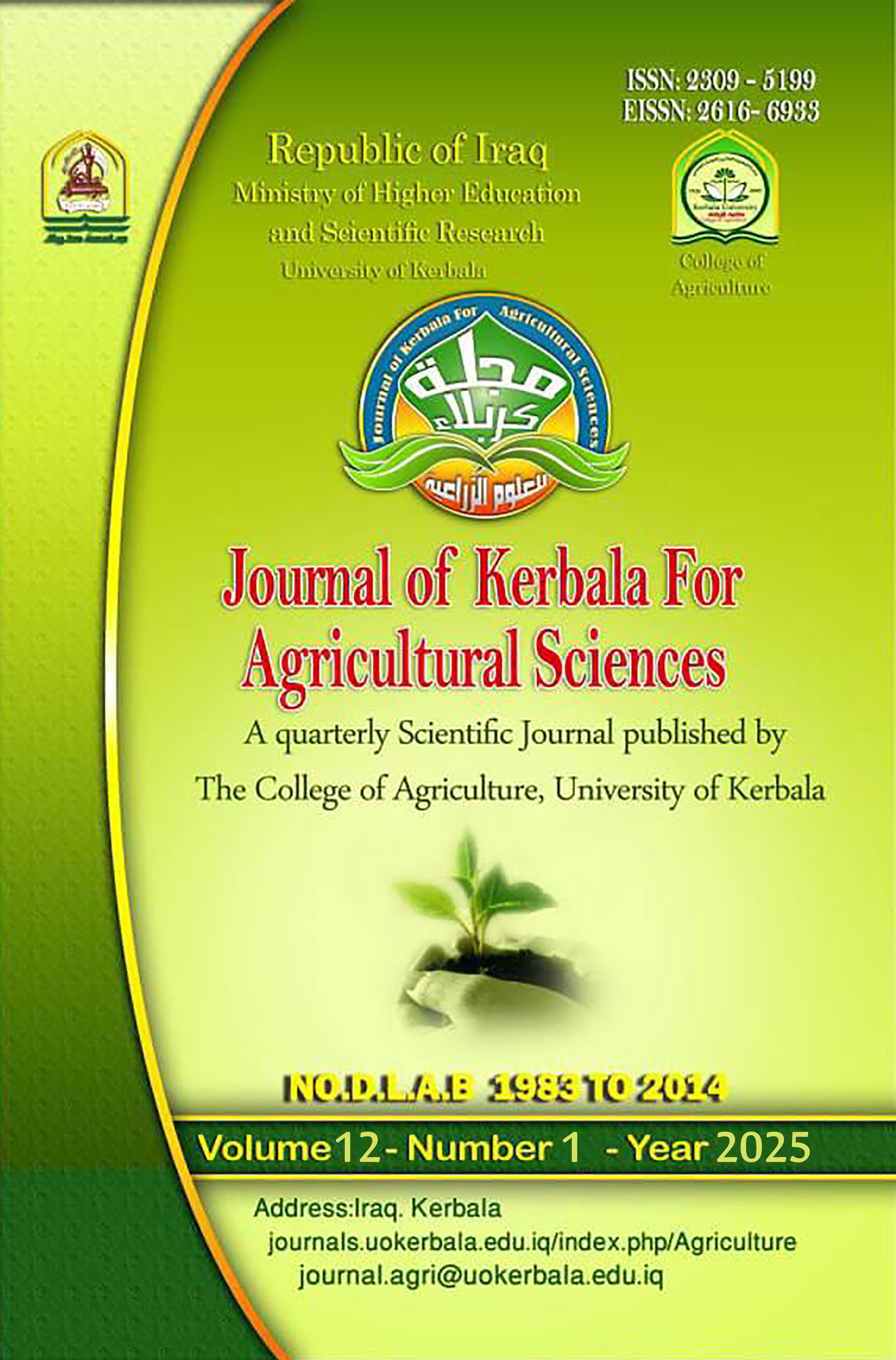Some Biological Aspects of Indian Meal Moth Plodia interpunctella (Hübner) (Lepidoptera Pyralidae) and its Natural
DOI:
https://doi.org/10.59658/jkas.v12i1.3262Keywords:
Indian moth Plodia interpunctella, Biology, Plant extracts, Storage foodsAbstract
Indian meal moth, Plodia interpunctella (Hübner) life cycle was investigated the mean duration of the pre-mating, pre-oviposition, oviposition, and post-oviposition were 1.75, 2.50, 2.20, and 3.50 days, respectively. The average number of laid eggs was 138.80 eggs, and newly emerged larvae completed their growth inside the cages. The average incubation period, larva development period, pupation period, and adult longevity were 4.62, 28.50, 7.04, and 40.16 days, respectively. The duration of 1st, 2nd, 3rd, 4th, 5th, and 6th larval instars was 4.52, 4.80, 4.95, 3.90, 4.60, and 6.13 days, respectively, with a total larvae longevity of 28.90 days. Mentha longifolia L. had the largest mortality rate, 89.00 %, of the larvae and Ocimum basilicum extract, with a mortality rate of 81.00 %, while Thymus kotschyanus Bioss. was the lowest mortality rate, 55.00 %. The plant extracts treatment showed that the effective Mentha longifolia L., which gave 42.00 mortality for 48 hours at 50 % concentration and raised to 89.00% at a rate of 100% concentration, Ocinum basilicum gave 37.00 % and 81.00% after 48 hours at a rate of 50 % and 100 % concentration respectively, but the Thymus kotschyanus Boiss. Gave 41.00 % and 55.00% after 48 hours at 50 % and 100 % concentration, respectively.
Downloads
Published
How to Cite
Issue
Section
License
Copyright (c) 2025 Copyright (c) 2024 is the Author's article. Published by the Journal of Kerbala for Agricultural Sciences under a CC BY 4.0 license

This work is licensed under a Creative Commons Attribution 4.0 International License.
Licensing Terms
All articles are published under a Creative Commons License and will be directed to the Creative Commons Attribution 4.0 International License (CC BY 4.0) That permits use, distribution, and reproduction in any medium, provided the original work is properly cited. This license also allows the work to be used for commercial purposes.
Use by both non-commercial and commercial users
This content is licensed under a Creative Commons Attribution 4.0 International (CC BY 4.0) license, permitting use by both non-commercial and commercial users. Individual users may access, download, copy, display, and redistribute the articles to colleagues, as well as adapt, translate, and text- and data-mine the content, subject to the following conditions:
- The author's moral rights, including the right of attribution and the right to protect their work from derogatory treatment, are respected.
- Where content in the article is identified as belonging to a third party, users must ensure that any reuse complies with the copyright policies of the owner of that content.
- If the article content is reused for research or educational purposes, users should maintain a link to the appropriate bibliographic citation, including the DOI and a link to the published version on the journal's website.






